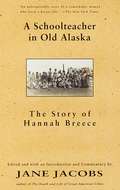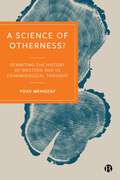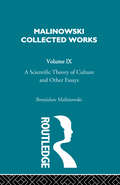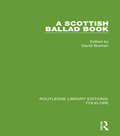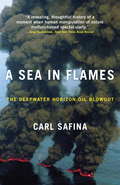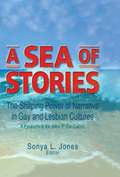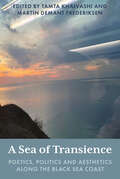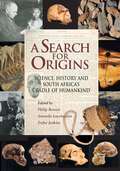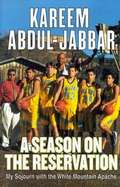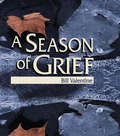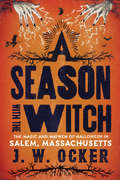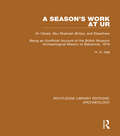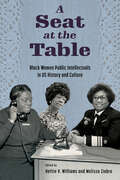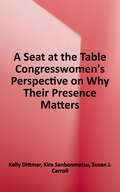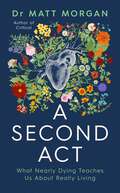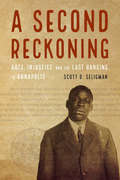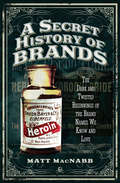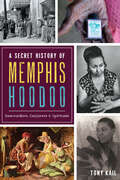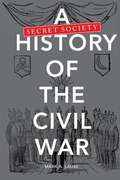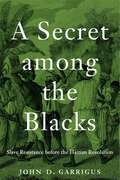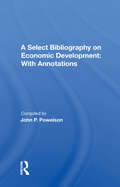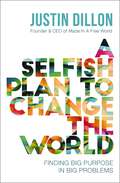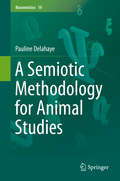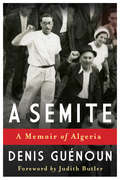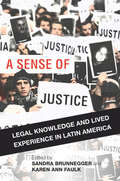- Table View
- List View
A Schoolteacher in Old Alaska: The Story of Hannah Breece
by Hannah BreeceWhen Hannah Breece came to Alaska in 1904, it was a remote lawless wilderness of prospectors, murderous bootleggers, tribal chiefs, and Russian priests. She spent fourteen years educating Athabascans, Aleuts, Inuits, and Russians with the stubborn generosity of a born teacher and the clarity of an original and independent mind. Jane Jacobs, Hannah's great-niece, here offers an historical context to Breece's remarkable eyewitness account, filling in the narrative gaps, but always allowing the original words to ring clearly. It is more than an adventure story: it is a powerful work of women's history that provides important--and, at times, unsettling--insights into the unexamined assumptions and attitudes that governed white settler's behavior toward native communities at the turn of the century. "An unforgettable...story of a remarkable woman who lived a heroic life."--The New York TimesFrom the Trade Paperback edition.
A Science of Otherness?: Rereading the History of Western and US Criminological Thought
by Yoav MehozayThis book presents a critical history of Western criminological thought from the Enlightenment to the development of modern criminological theories, mainly in the United States, over the last hundred years. It explores a variety of approaches including the classical school, the various currents of positivist criminology, and the managerial movement. Mehozay contends that Western criminological thought can be seen as an ideological project based on ‘otherness’, justifying social hierarchies and sustaining the control of some people over others. He demonstrates how ideologies of otherness, such as the non-rational other, the pathological other and more, validate projects of control, exclusion, modernization, and care.
A Scientific Theory of Culture and Other Essays: [1944]
by Bronislaw MalinowskiPublished, posthumously, this volume is both a summing up and a reformulation of Malinowski's functional theory of culture.
A Scottish Ballad Book (Routledge Library Editions: Folklore)
by David BuchanThe popular appeal of the ballad is perennial, and few literary genres give so much pleasure to so many kinds of people. This anthology, first published in 1973, is drawn from the richest ballad tradition in Britain, that of the Northeast of Scotland. It provides a fresh and original choice of songs that ranges from the old ballads like ‘Gil Brenton’ and ‘Willie’s Lady’ to the bothy ballads like ‘The Tarves Rant’. The collection illustrates the development of a tradition over the centuries from the oral stage down to the modern, and exemplifies the methods of composition and transmission, the kinds of ballad-story, and the types of ballad-text found in the various stages of a ballad tradition. It illustrates the variety of subject matter, and indicates lines of relationship with other genres of Folklore Studies. A substantial section, containing what are widely acknowledged as the best of all British ballads, the oral ballads of Anna Brown, demonstrates clearly that the ballads are not merely simple or crude poems; in their oral form, they are narrative songs of some complexity and sophistication. This anthology is complementary to Dr Buchan’s The Ballad and the Folk.
A Sea in Flames: The Deepwater Horizon Oil Blowout
by Carl SafinaCarl Safina has been hailed as one of the top 100 conservations of the 20th century (Audubon Magazine) andA Sea in Flamesis his blistering account of the months-long manmade disaster that tormented a region and mesmerized the nation. Traveling across the Gulf to make sense of an ever-changing story and its often-nonsensical twists, Safina expertly deconstructs the series of calamitous misjudgments that caused theDeepwater Horizonblowout, zeroes in on BP’s misstatements, evasions, and denials, reassesses his own reaction to the government’s crisis handling, and reviews the consequences of the leak-and what he considers the real problems, which the press largely overlooked. Safina takes us deep inside the faulty thinking that caused the lethal explosion. We join him on aerial surveys across an oil-coated sea. We confront pelicans and other wildlife whose blue universe fades to black. Safina skewers the excuses and the silly jargon-like “junk shot” and “top kill”-that made the tragedy feel like a comedy of horrors-and highlighted Big Oil’s appalling lack of preparedness for an event that was inevitable. Based on extensive research and interviews with fishermen, coastal residents, biologists, and government officials,A Sea In Flameshas some surprising answers on whether it was “Obama’s Katrina,” whether the Coast Guard was as inept in its response as BP was misleading, and whether this worst unintended release of oil in history was really America’s worst ecological disaster. Impassioned, moving, and even sharply funny,A Sea in Flamesis ultimately an indictment of America’s main addiction. Safina writes: “In the end, this is a chronicle of a summer of pain-and hope. Hope that the full potential of this catastrophe would not materialize, hope that the harm done would heal faster than feared, and hope that even if we didn’t suffer the absolutely worst-we’d still learn the big lesson here. We may have gotten two out of three. That’s not good enough. Because: there’ll be a next time. ” From the Hardcover edition.
A Sea of Stories: The Shaping Power of Narrative in Gay and Lesbian Cultures: A Festschrift for John P. DeCecco
by John Dececco, Phd Sonya L JonesTake a look at how narrative has shaped gay and lesbian cultureA Sea of Stories: The Shaping Power of Narrative in Gay and Lesbian Cultures: A Festschrift for John P. De Cecco is an unforgettable collection of personal narratives that explores the historical, psychological, and sociological contexts of homosexuality in locations ranging from Nazi Germany to Colorado. Some of the prominent authors in this collection include David Bergman, Louis Crew, Diana Hume George, and Ruth Vanita. Scholars in gay and lesbian studies, political movements, cultural studies, and narratology, and anyone interested in gay history will want to explore these intriguing narratives on topics such as sex and sin in the South, selling gay literature before Stonewall, growing up gay in India, and the story of an interracial male couple facing homophobic ignorance in a small town.A Sea of Stories also contains creative fiction and nonfiction love stories, war stories, oral stories, and bibliographies, and a beautiful post-Stonewell and post-modern narrative set on a South African seascape that tells the story of two professional men and the possibility of a kiss. For a complete list of contents, please visit our Web site at www.haworthpressinc.com.This book offers you a variety of narratives that cover a wide range, including: memoirs of gay Holocaust survivors and the emergence of the first lesbian and gay book club in its wake homophobia in the workplace and the use of coming-out stories to enhance workplace diversity the establishment of a gay/straight alliance in a Salt Lake City high school that is heavily dominated by Mormons gay literary heritage that examines the works of Langston Hughes as well as Martin Duberman, Paul Monette, and Edmund White in relation to the lesbian 70s creative nonfiction about a woman's love for another woman, her lifelong friend Provincetown's remarkable community response to the AIDS epidemicA collection of chapters written by the colleagues and former students of John P. De Cecco, pioneering editor of the Journal of Homosexuality, A Sea of Stories takes its title from a phrase Dr. De Cecco used in his keynote address to the “History and Memory” conference at Allegheny College in 1997. This conference sparked the idea for this collection of essays that examine the homosexual experience through historical, psychological, and sociological viewpoints and homosexuality in literature. These courageous stories will assist readers to know themselves more deeply, to identify wih others, and to interpret gay and lesbian experiences in different narrative forms.
A Sea of Transience: Poetics, Politics and Aesthetics along the Black Sea Coast
by Martin Demant Frederiksen Tamta KhalvashiTransience is found in every meeting and form of coexistence between people and things that live and exist by, or move across or along, the Black Sea. It may come in various forms and guises, from de facto states, tourism, migration, trafficking or military troops, and it needs to be written and captured in sensuous, affective and imaginative ways. With particular attention to poetics, politics and aesthetics, this volume focuses on the scales of transient moments and histories, and enables readers to see and sense the many forms of transience that occur in a given landscape, sea or space.
A Search for Origins: Science, history and South Africa's 'Cradle of Humankind'
by Philip Bonner,Amanda Esterhuysen & Trefor JenkinsA study of the 'Cradle of Humanity and its history.The 'Cradle of Humankind' (COH), bordering Gauteng and the North-West Province, was declared a World Heritage Site for the wealth of the human and animal fossils found there. Research based on fossils found in the area as well as signs of early human habitation have shed new light on the evolution of humankind and on the significant role that southern Africa played in the development of modern humans. A Search for Origins aims to provide an overview of the history of the COH, and of the important discoveries that have been made there, for a non-specialist audience. A number of general accounts have been written which have concentrated on the palaeontological discoveries made there. No systematic account written by specialists in their disciplines has, however, been published about the wider history of the COH and surrounding areas. In particular, no overview spanning the evolution of early plant and animal life, human development and recent and colonial history as reflected in discoveries linked to the COH, has been attempted. This edited volume frames the scientific advances that have been made in the COH against the intellectual and political background out of which they emerged. The multi-disciplinary approach - from a wide range of specialists -is innovative and ground-breaking.
A Season On The Reservation: My Sojourn With The White Mountain Apaches
by Stephen Singular Kareem Abdul-JabbarKareem Abdul-Jabbar has always been fascinated by history -- nineteenth-century American history in particular. Tired of L.A., restless and looking for new adventure, challenge, and discovery, he decides to go live among the Apaches he's read about. <P><P> He encounters a complex reality. The kids on the Alchesay Falcons team don't easily embrace what he's trying to teach them on the court. Gradually they begin to learn from him as he begins to learn from them. He teaches them to push out of their comfort zone and try new things, both in sports and in life. They give him something he didn't quite expect: a way to reconnect with his passion for basketball. <P><P> This is a story about the qualities we have in common and the things that still divide us in terms of race, culture, and history. Along the way, we get to know the kids, the coaches, the town of Whiteriver and Alchesay High, the tribe -- but most of all, we get closer to Kareem, a man well into middle age who wants to pass along his knowledge and experience in basketball and life. Kareem gives something back, and in so doing receives more than he ever imagined.
A Season of Grief
by Bill ValentineThis unique book celebrates a long-term, interracial relationship and details the everyday struggles of a surviving partner trying to carry on in a radically changed world.A Season of Grief chronicles the author's emotional descent after the violent death of his partner of 21 years. Bill Valentine's journal of fear, anger, denial, and loneliness captures the glimmers of hope, moments of serendipity, and mysterious coincidences that emerged from his full-time devotion to grief following the death of Joe Lopes. Lopes died along with 264 others when American Airlines Flight 587 crashed in November 2001 in route to the Dominican Republic. It was the second deadliest accident in U.S. aviation history. He is a word always on my lips as I try to work him into a conversation. He is a memory that I strive to keep alive. So yes, in this sense, he is not gone. But in reality, he is. He is gone as my lover. He is gone as my life partner. He is gone as my soul mate, the only person to whom I periodically bared my soul. He is gone as my best friend, the only person to whom I ever attached that label. So pardon me while I still hang on to the notion that he is not here with me. Pardon me while I cling stubbornly to the insistence that he is gone.Valentine's candid and thoughtful account of his heartbreaking efforts to make sense of his partner's death-and survive in a world without him-is by turns, funny, frightening, sobering, and surprising. In the nine months following the tragedy of Flight 587, Valentine finds every waking moment of his life affected by his partner's absence-from mundane household chores to major life decisions. A Season of Grief is a story told in darkness and light, of hurt and healing, love and loneliness, but mostly, of a man who learns to live with his partner's absence through the persistent, surprising evidence of his presence. Our job on earth is to live with uncertainty, ambiguity, and hope. We are given a limited tool set but one, in my opinion, that's sufficient for the job. Sufficient to allow us to be engaged in life-to love, grieve, work, play, celebrate, and despair. We have a remarkable ability to rebound and grow. We have been granted the capacity for wonder and laughter-especially at ourselves. These last two gifts were bestowed generously on Joe and he, in turn, taught me how vital they are.Making a strong case for gay marriage, A Season of Grief chronicles Valentine's struggles to be recognized as a surviving spouse, including a historic lawsuit with Lambda Legal Defense and Education fund against the New York State Workers Compensation Board. Valentine and Lopes took every conceivable step to formalize their relationship, including New York City Domestic Partnership, but the Workers Compensation Board and a New York State appeals court refused to recognize Valentine as a legal surviving spouse.Grief doesn't come with a set of instructions. But A Season of Grief can help guide you through the lonely journey that follows the death of a loved one. Valentine's memoir is a testament to the healing power of reality and the enduring nature of love.
A Season with the Witch
by J. W. OckerSalem, Massachusetts, may be the strangest city on the planet. A single event in its 400 years of history--the Salem Witch Trials of 1692--transformed it into the Capital of Creepy in America. But Salem is a seasonal town--and its season happens to be Halloween. Every October, this small city of 40,000 swells to close to half a million as witches, goblins, ghouls, and ghosts (and their admirers) descend on Essex Street. For the fall of 2015, occult enthusiast and Edgar Award-winning writer J. W. Ocker moved his family of four to downtown Salem to experience firsthand a season with the witch, visiting all of its historical sites and macabre attractions. In between, he interviews its leaders and citizens, its entrepreneurs and visitors, its street performers and Wiccans, its psychics and critics, creating a picture of this unique place and the people who revel in, or merely weather, its witchiness.
A Season's Work at Ur, Al-'Ubaid, Abu Shahrain-Eridu-and Elsewhere: Being an Unofficial Account of the British Museum Archaeological Mission to Babylonia, 1919 (Routledge Library Editions: Archaeology)
by H.R. HallThis classic work from 1930 describes the archaeological mission to Iraq which was a huge leap in the understanding of Mesopotamian history. It chronicles the journey, the excavations and the findings in a personalised account, heavily illustrated with maps, photographs of the locations and the findings, offering great insight into a special investigation of its time.
A Seat at the Table: Black Women Public Intellectuals in US History and Culture
by Hettie V. Williams and Melissa ZiobroContributions by Omar H. Ali, Simone R. Barrett, Tejai Beulah, Sandra Bolzenius, Carol Fowler, Lacey P. Hunter, Tiera C. Moore, Tedi A. Pascarella, John Portlock, Lauren T. Rorie, Tanya L. Roth, Marissa Jackson Sow, Virginia L. Summey, Hettie V. Williams, and Melissa ZiobroWhile Black women’s intellectual history continues to grow as an important subfield in historical studies, there remains a gap in scholarship devoted to the topic. To date, major volumes on American intellectual history tend to exclude the words, ideas, and contributions of these influential individuals. A Seat at the Table: Black Women Public Intellectuals in US History and Culture seeks to fill this void, presenting essays on African American women within the larger context of American intellectual history. Divided into four parts, the volume considers women in politics, art, government, journalism, media, education, and the military. Essays feature prominent figures such as Shirley Chisholm, Oprah Winfrey, journalist Charlotta Bass, and anti-abortion activist Mildred Fay Jefferson, as well as lesser-known individuals.The anthology begins with a discussion of the founders in Black women’s public intellectualism, providing a framework for understanding the elements, structure, and concerns central to their lives and work in the nineteenth century. The second section focuses on leaders in the Black Christian intellectual tradition, the civil rights era, and modern politics. Part three examines Black women in society and culture in the twentieth century, with essays on such topics as artists in the New Negro era; Joycelyn Elders, a public servant and former surgeon general; and America’s foremost Black woman influencer, Oprah. Lastly, part four concerns Black women and their ideas about public service—particularly military service—with essays on service members during World War II and the post-WWII military. Taken as a whole, A Seat at the Table is an important anthology that helps to establish the validity and existence of heretofore neglected intellectual traditions in the public square.
A Seat at the Table: Congresswomen's Perspectives on Why Their Presence Matters
by Kira Sanbonmatsu Susan J. Carroll Kelly DittmarThe presence of women in Congress is at an all-time high—approximately one of every five members is female—and record numbers of women are running for public office for the 2018 midterms. At the same time, Congress is more polarized than ever, and little research exists on how women inCongress view their experiences and contributions to American politics today. <p><p>Drawing on personal interviews with over three-quarters of the women serving in the 114th Congress, the authors analyze how these women navigate today's stark partisan divisions, and whether they feel effective in their jobs. Unlike other studies of women in Congress, this book avoids looking at gender in a vacuum, instead considering how gender interacts with political party, race and ethnicity, seniority, chamber, and district characteristics to shape women's representational influence and behavior. <p><P>Through first-person perspectives, A Seat at the Table looks at what motivates these women's legislative priorities and behavior, details the ways in which women experience service within a male-dominated institution, and highlights why it matters that women sit in the nation's federal legislative chambers. It describes the strategies women employ to "slog through" any challenges they confront as well as the opportunities available to them. Importantly, the book looks at the myriad ways in which different women's representation matters, beyond gender dichotomies and "women's issues"—finding that two of the most complicating factors to a singular narrative of women's congressional representation are party and race and ethnicity. While their perspectives, experiences, and influence are neither uniform nor interchangeable, congresswomen believe their presence matters in myriad ways, affecting congressional culture, priorities, processes, debates, and outcomes.
A Second Act: What Nearly Dying Teaches Us About Really Living
by Dr Matt MorganI&’ve worked as a doctor for over twenty years, caring for patients who are in the thick fog between life and death. I&’ve met hundreds of people who have died, were resuscitated and lived. I&’ve long thought that these are the people that we should be listening to, not influencers or business gurus. They know what really matters. Dr Matt Morgan has met hundreds of people who&’ve come back from the dead. Their hearts stopped, their bodies unresponsive, rescued from the brink of death by the modern intensive care techniques he specialises in. People like Ed, who was walking through a park when there was a bang, a bright light and then nothing. Ed had been hit by a bolt of lightning – 300 million volts, enough to power a city for a day, coursed through his body, short-circuiting his heart. Ed was given life-saving CPR and he survived. He lives a little differently now, every day knowing the thin margins that separate life and death. In A Second Act, Morgan introduces us to patients who&’ve experienced hypothermia, overdoses, heart attacks and transplants to see how their lives have been transformed by the second chance they&’ve been given. He shares the lessons they&’ve learned, along with his own realisations about life and how to make the most of it. Life shouldn&’t be wasted on the living.
A Second Reckoning: Race, Injustice, and the Last Hanging in Annapolis
by Scott D. SeligmanA Second Reckoning tells the story of John Snowden, a Black man accused of the murder of a pregnant white woman in Annapolis, Maryland, in 1917. He refused to confess despite undergoing torture, was tried—through legal shenanigans—by an all-white jury, and was found guilty on circumstantial evidence and sentenced to death. Despite hair-raising, last-minute appeals to spare his life, Snowden was hanged for the crime. But decades after his death, thanks to tireless efforts by interested citizens and family members who believed him a victim of a &“legal lynching,&” Snowden was pardoned posthumously by the governor of Maryland in 2001.A Second Reckoning uses Snowden&’s case to bring posthumous pardons into the national conversation about amends for past racial injustices. Scott D. Seligman argues that the repeal of racist laws and policies must be augmented by reckoning with America&’s judicial past, especially in cases in which prejudice may have tainted procedures or perverted verdicts, evidence of bias survives, and a constituency exists for a second look. Seligman illustrates the profound effects such acts of clemency have on the living and ends with a siren call for a reexamination of such cases on the national level by the Department of Justice, which officially refuses to consider them.
A Secret History of Brands: The Dark and Twisted Beginnings of the Brand Names We Know and Love
by Matt MacNabbThe true—and often shocking—stories behind some of the biggest names in business. We live our lives immersed in name brand products. What most of us don't know is that the origins of many of the most well-known and beloved brands in the world are shrouded in controversy, drug use, and sometimes even blatant racism.A Secret History of Brands cuts through the rumors and urban legends and paints a picture of the true dark history of famous brands, like Coca-Cola, Hugo Boss, Adidas, Ford, Bayer, Chanel, and BMW, among others. Learn about: the mystery of the cocaine content of Coca-Colathe Hitler-Henry Ford connectionwhy Bayer is famous for aspirin, but began their journey with Heroinhow Kellogg's Corn Flakes were crafted to deter sexual arousaland more
A Secret History of Memphis Hoodoo: Rootworkers, Conjurers, & Spirituals (American Heritage Ser.)
by Tony Kail&“Reveals the stories and legends of conjurers and healers from the arrival of African slaves on Memphis plantations to blues musicians on Beale Street.&” —Preston Lauterbach, author of Beale Street Dynasty Widely known for its musical influence, Beale Street was also once a hub for Hoodoo culture. Many blues icons, such as Big Memphis Ma Rainey and Sonny Boy Williamson, dabbled in the mysterious tradition. Its popularity in some African American communities over the past two centuries fueled racial tension—practitioners faced social stigma and blame for anything from natural disasters to violent crimes. However, necessity sometimes outweighed prejudice, and even those with the highest social status turned to Hoodoo for prosperity, love, or retribution. In this book, Tony Kail traces Memphis's colorful Hoodoo heritage from the arrival of Africans in Shelby County to the growth of conjure culture in juke joints and Spiritual Churches.Includes photographs
A Secret Society History of the Civil War
by Mark A. LauseThis unique history of the Civil War considers the impact of nineteenth-century American secret societies on the path to as well as the course of the war. Beginning with the European secret societies that laid the groundwork for freemasonry in the United States, Mark A. Lause analyzes how the Old World's traditions influenced various underground groups and movements in America, particularly George Lippard's Brotherhood of the Union, an American attempt to replicate the political secret societies that influenced the European Revolutions of 1848. Lause traces the Brotherhood's various manifestations, including the Knights of the Golden Circle (out of which developed the Ku Klux Klan), and the Confederate secret groups through which John Wilkes Booth and others attempted to undermine the Union. This book shows how, in the years leading up to the Civil War, these clandestine organizations exacerbated existing sectional tensions and may have played a part in key events such as John Brown's raid on Harpers Ferry, Lincoln's election, and the Southern secession process of 1860-1861.
A Secret among the Blacks: Slave Resistance before the Haitian Revolution
by John D. GarrigusA bold rethinking of the Haitian Revolution reveals the roots of the only successful slave uprising in the modern world.Unearthing the progenitors of the Haitian Revolution has been a historical project of two hundred years. In A Secret among the Blacks, John D. Garrigus introduces two dozen Black men and women and their communities whose decades of resistance to deadly environmental and political threats preceded and shaped the 1791 revolt.In the twenty-five miles surrounding the revolt’s first fires, enslaved people of diverse origins lived in a crucible of forces that arose from the French colonial project. When a combination of drought, trade blockade, and deadly anthrax bacteria caused waves of death among the enslaved in the 1750s, poison investigations spiraled across plantations. Planters accused, tortured, and killed enslaved healers, survivors, and community leaders for deaths the French regime had caused. Facing inquisition, exploitation, starvation, and disease, enslaved people devised resistance strategies that they practiced for decades. Enslaved men and women organized labor stoppages and allied with free Blacks to force the French into negotiations. They sought enforcement of freedom promises and legal protection from abuse. Some killed their abusers.Through remarkable archival discoveries and creative interpretations of the worlds endured by the enslaved, A Secret among the Blacks reveals the range of complex, long-term political visions pursued by enslaved people who organized across plantations located in the seedbed of the Haitian Revolution. When the call to rebellion came, these men and women were prepared to answer.
A Select Bibliography On Economic Development: With Annotations
by John P. PowelsonThis bibliography of more than 2,000 titles contains both books and journal articles, primarily those published since 1970. Most of the entries are annotated. The material is classified according to forty-eight categories, and there is also a list of relevant titles for each major country in Africa, Asia, and Latin America.
A Selfish Plan to Change the World: Finding Big Purpose in Big Problems
by Justin DillonYou are exactly what the world needs What if your search for meaning could solve the world’s problems? What if everything you are passionate about could save a life or change history? Justin Dillon argues it can, and A Selfish Plan to Change the World shows how. In this paradigm-shifting new book, Dillon--the founder of Slavery Footprint and Made in a Free World--reveals the secret to a life of deep and lasting significance: the discovery that our need for meaning is inextricably linked to the needs of the world. A Selfish Plan to Change the World delivers a revolutionary method for meeting both needs. Drawing upon his own unlikely transformation from touring musician to founder of a global movement and telling the stories of other surprising world-changers, Dillon shows how to create a life of deep purpose by stepping into the problems of the world. Taking readers on a journey from sweatshops in India to punk rock concerts in Ireland, Dillon exposes the limitations of the "giving back" approach involving donations and volunteerism to reveal the unexpected power of "giving in" to pursue self-interest in a way that alters the very dynamics of the world’s most challenging problems. A Selfish Plan to Change the World is your "self-help-others" guide to a life that matters, demonstrating how you can repurpose your existing talents, backstory, and networks to improve the lives of others. Changing the world no longer belongs only to martyrs and professional do-gooders. You can live an extraordinary life. You can change the world. All you ever needed was a plan.
A Semiotic Methodology for Animal Studies (Biosemiotics #19)
by Pauline DelahayeThis monograph is about new perspective in animal studies methodology, by using concepts and tools from the field of semiotics. It proposes a reflexion on current challenges and issues in the ethology field, and introduces different semiotics – biosemiotics, zoosemiotics – as potential methodological solutions. The chapters cover many aspects of ethology where semiotics can be a helpful hand: studies of language, culture, cognition or emotions, issues about complex, endangered or variable species. It explains why these points are difficult to study for actual ethology, why they still matter for researchers, biodiversity actors or wildlife programs, and how an interdisciplinary study with a semiotic point of view can help understand them. This book will appeal to a wide readership, from researchers and academics in living sciences as well as in linguistics fields, to other professionals – veterinarian, wildlife managers, zookeepers, and many others – who feel the need to better understand some aspects of animals they are working with. Students with animal focus should read this book as an introduction to interdisciplinary methodology, and a proposition to work differently with animals.
A Semite: A Memoir of Algeria
by Denis GuenounIn this vivid memoir, Denis Guénoun excavates his family's past and progressively fills out a portrait of an imposing, enigmatic father. René Guénoun was a teacher and a pioneer, and his secret support for Algerian independence was just one of the many things he did not discuss with his teenaged son. To be Algerian, pro-independence, a French citizen, a Jew, and a Communist were not, to René's mind, dissonant allegiances. He believed Jews and Arabs were bound by an authentic fraternity and could only realize a free future together. René Guénoun called himself a Semite, a word that he felt united Jewish and Arab worlds and best reflected a shared origin. He also believed that Algerians had the same political rights as Frenchmen. Although his Jewish family was rooted in Algeria, he inherited French citizenship and revered the principles of the French Revolution. He taught science in a French lycée in Oran and belonged to the French Communist Party. His steadfast belief in liberty, equality, and fraternity led him into trouble, including prison and exile, yet his failures as an activist never shook his faith in a rational, generous future.René Guénoun was drafted to defend Vichy France's colonies in the Middle East during World War II. At the same time, Vichy barred him and his wife from teaching because they were Jewish. When the British conquered Syria, he was sent home to Oran, and in 1943, after the Allies captured Algeria, he joined the Free French Army and fought in Europe. After the war, both parents did their best to reconcile militant unionism and clandestine party activity with the demands of work and family. The Guénouns had little interest in Israel and considered themselves at home in Algeria; yet because he supported Algerian independence, René Guénoun outraged his French neighbors and was expelled from Algeria by the French paramilitary Organisation Armée Secrète. He spent his final years in Marseille. Gracefully weaving together youthful memories with research into his father's life and times, Denis Guénoun re-creates an Algerian past that proved lovely, intellectually provocative, and dangerous.
A Sense of Justice: Legal Knowledge and Lived Experience in Latin America
by Karen Faulk Sandra BrunneggerThroughout Latin America, the idea of "justice" serves as the ultimate goal and rationale for a wide variety of actions and causes. In the Chilean Atacama Desert, residents have undertaken a prolonged struggle for their right to groundwater. Family members of bombing victims in Buenos Aires demand that the state provide justice for the attack. In Colombia, some victims of political violence have turned to the courts for resolution, while others reject the state's ability to fairly adjudicate their grievances and have constructed a non-state tribunal. In each of these examples, the protagonists seek one main thing: justice. A Sense of Justice ethnographically explores the complex dynamics of justice production across Latin America. The chapters examine (in)justice as it is lived and imagined today and what it means for those who claim and regulate its parameters, including the Brazilian police force, the Permanent Peoples' Tribunal in Colombia, and the Argentine Supreme Court. Inextricable as "justice" is from inequality, violence, crime, and corruption, it emerges through memory, in space, and where ideals meet practical limitations. Ultimately, the authors show how understanding the dynamic processes of constructing justice is essential to creating cooperative rather than oppressive forms of law.
